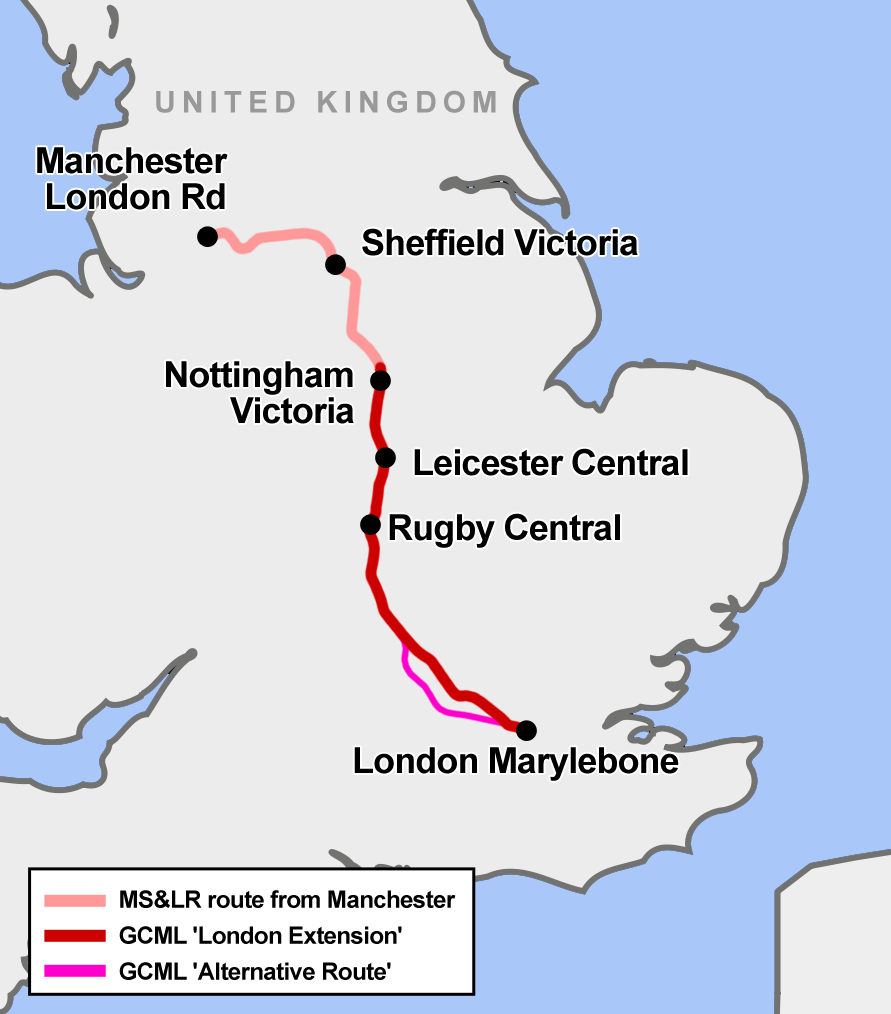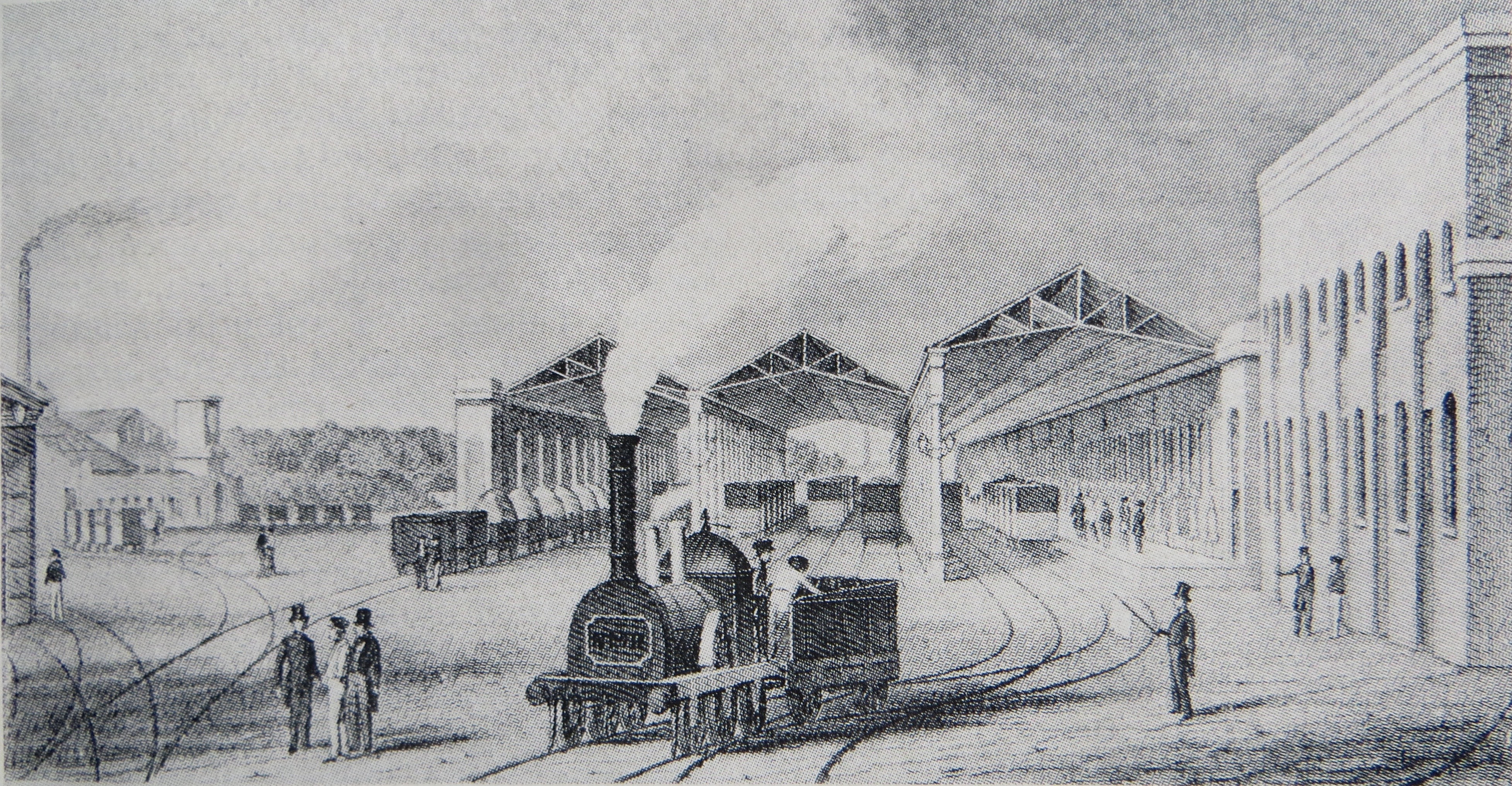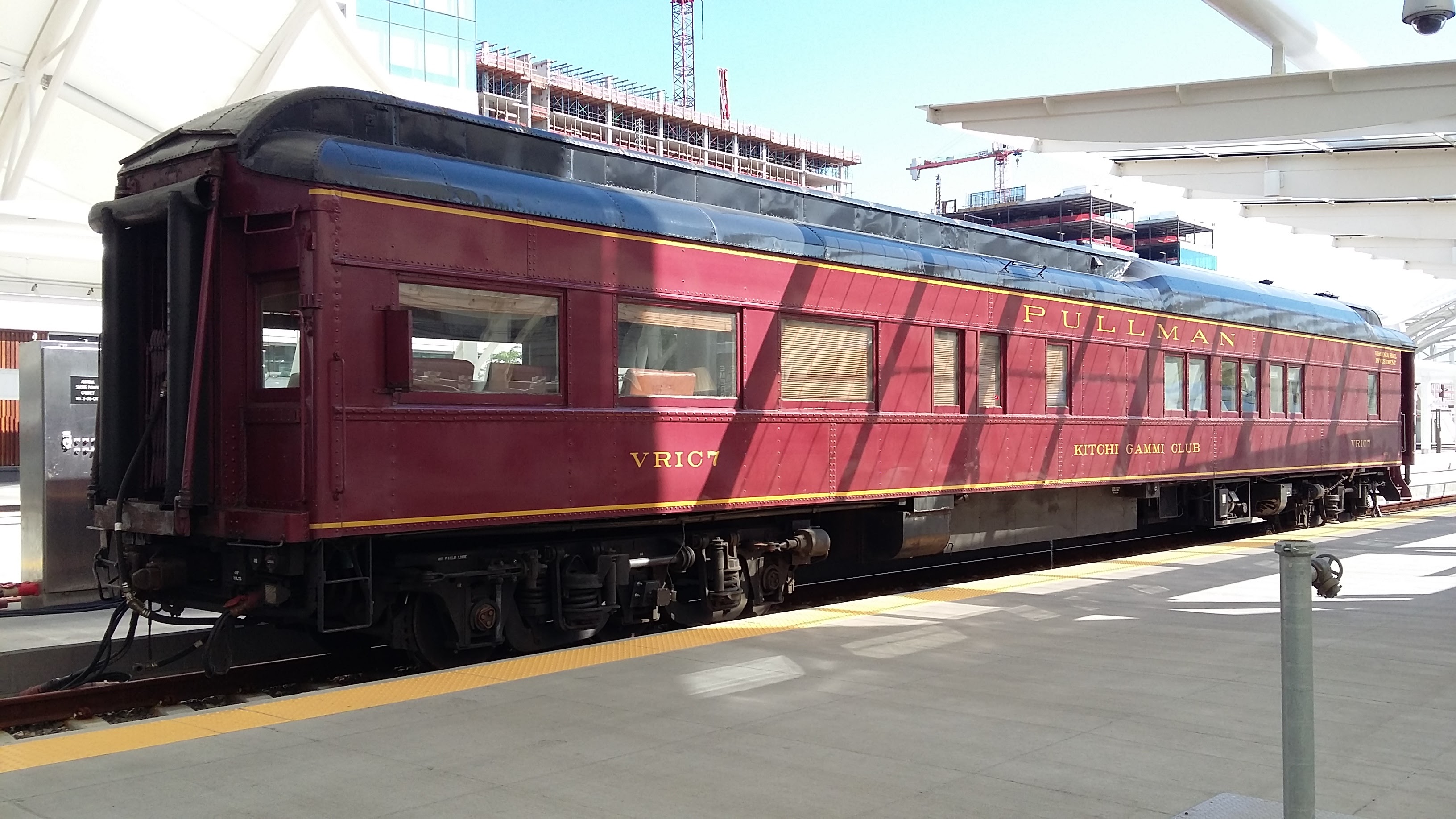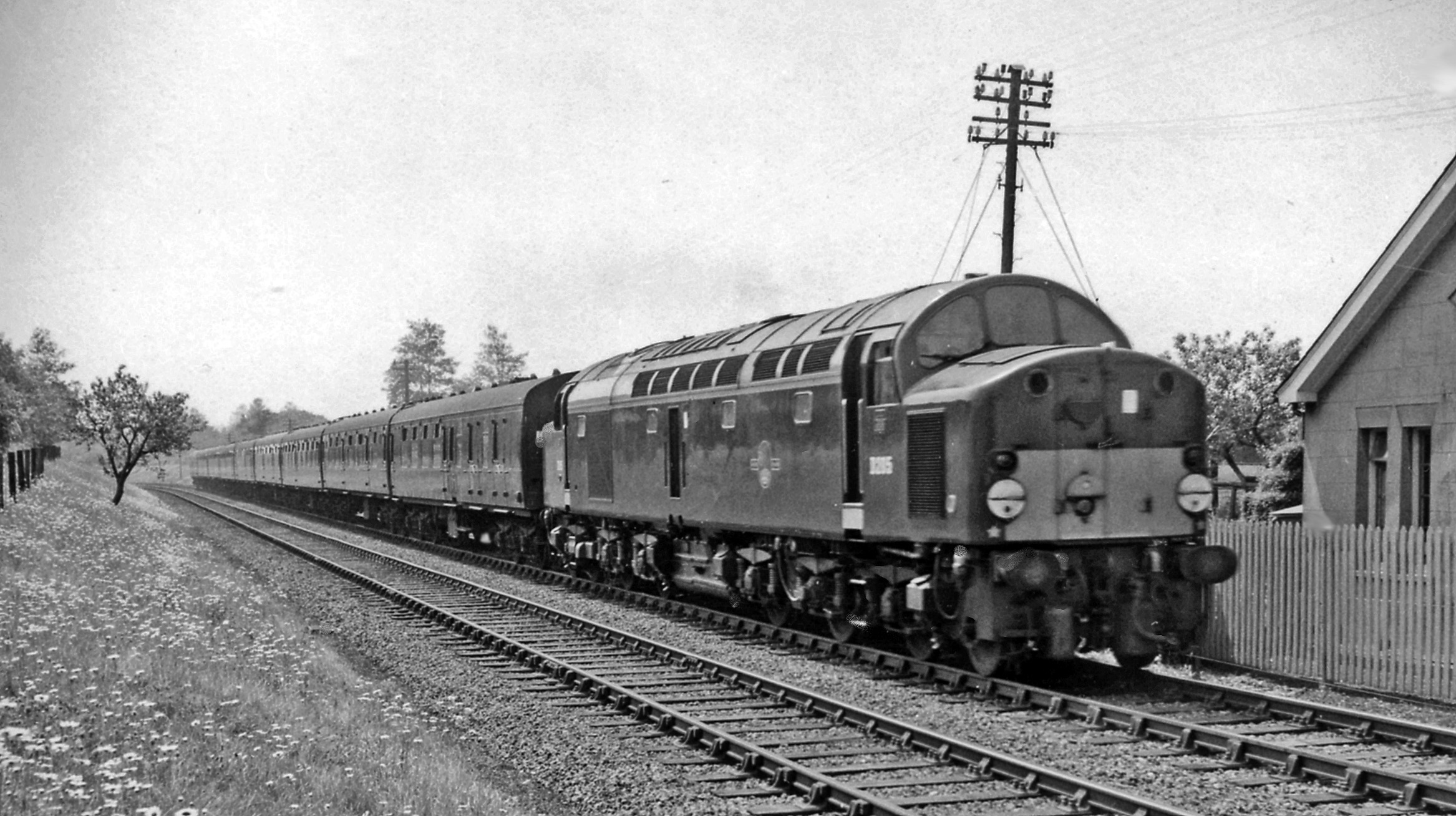|
Master Cutler (train)
The ''Master Cutler'' is a British named express passenger train operated by East Midlands Railway between Sheffield and London St Pancras. It has a somewhat complicated history, with the route and composition changing several times. History In 1947 at a meeting of the Company of Cutlers in Hallamshire Ronald Matthews, a former holder of the office of Master Cutler and Chairman of the London and North Eastern Railway suggested that the 7.40 train from Sheffield Victoria to London Marylebone, returning at 18.15, should be named ''The Master Cutler''. This was agreed by both the Company of Cutlers and the LNER. The then Master Cutler, A Balfour, later the 2nd Lord Riverdale, rode on the footplate of the inaugural train. It has since been a tradition that the Master Cutler ride with the driver of the train during their year of office. The ''Master Cutler'' was introduced by the LNER on 6 October 1947, running on the Great Central Main Line route from Sheffield Victoria to Lond ... [...More Info...] [...Related Items...] OR: [Wikipedia] [Google] [Baidu] |
East Midlands Railway
Abellio East Midlands Limited, trading as East Midlands Railway (EMR), is a train operating company in England, owned by Abellio, and is the current operator of the East Midlands franchise. History In March 2017, the Department for Transport announced that Arriva, a joint venture between FirstGroup and Trenitalia, and incumbent Stagecoach had been shortlisted to bid for the next East Midlands franchise. Abellio was added in February 2018. FirstGroup and Trenitalia pulled out of the bidding process in April 2018 to focus on the West Coast Partnership franchise. In April 2019 the franchise was awarded to Abellio, with East Midlands Railway (EMR) to take over the franchise from East Midlands Trains (EMT) on 18 August 2019 for a period of eight years. [...More Info...] [...Related Items...] OR: [Wikipedia] [Google] [Baidu] |
Great Central Main Line
The Great Central Main Line (GCML), also known as the London Extension of the Manchester, Sheffield and Lincolnshire Railway (MS&LR), is a former railway line in the United Kingdom. The line was opened in 1899 and built by the Great Central Railway running from Sheffield in the North of England, southwards through Nottingham and Leicester to Marylebone in London. The GCML was the last main line railway to be built in Britain during the Victorian period. Built by the railway entrepreneur Edward Watkin with the aim to run as a fast trunk route from the North and the East Midlands to London and the south of England. Initially not a financial success, it recovered under the leadership of Sam Fay. Although initially planned for long-distance passenger services, in practice the line's most important function became to carry goods traffic, notably coal. In the 1960s, the line was considered by Dr Beeching as an unnecessary duplication of other lines that served the same places, espe ... [...More Info...] [...Related Items...] OR: [Wikipedia] [Google] [Baidu] |
Sheffield Continental
The ''Sheffield Continental'' is one of the four flagship named passenger trains operated by East Midlands Railway. There is only a south-bound ''Sheffield Continental'' service which is the 0647 train from Sheffield to London St Pancras. The service started on 15 December 2008 as part of the December 2008 timetable changes. The service was named as part of an East Midlands Trains competition to name two new flagship services. It is named after the ability to change onto Eurostar services to the continent at London St Pancras. The service is provided by two 5-car Class 222 ''Meridian'' trains coupled together to form a 10-car train. Stations served As of 2019 the ''Sheffield Continental'' calls at: *Sheffield * Chesterfield *Derby * East Midlands Parkway *Loughborough *Leicester *Kettering *Wellingborough *London St Pancras Other named trains East Midlands Railway operate three other named trains called: *''Master Cutler'' *''Robin Hood'' *'' South Yorkshireman'' See also * ... [...More Info...] [...Related Items...] OR: [Wikipedia] [Google] [Baidu] |
South Yorkshireman
The ''South Yorkshireman'' is a British named passenger train. In its modern version it is one of four named expresses operated by East Midlands Railway, and runs between and . The original ''South Yorkshireman'' was a train in the post-WW2 era from Bradford via to over the Great Central Main Line. 1940s, 1950s The ''South Yorkshireman'' was started by British Railways in May 1948. It left daily at 10:00, returning from London at 16:50, and calling at Huddersfield, Sheffield, and Leicester; in some years at least, also at Halifax, Brighouse, Penistone, Nottingham, Rugby and Aylesbury. It was not a particularly fast service even by the standards of that era, the down train taking 5 hours 30 minutes to get from London to Bradford. It usually had nine coaches including a restaurant car, and was often hauled by a Gresley A3 Pacific. The train continued running until 1960, when all long-distance expresses on the former Great Central route were withdrawn. Present day The ''Sout ... [...More Info...] [...Related Items...] OR: [Wikipedia] [Google] [Baidu] |
Derby Railway Station
Derby railway station (, also known as Derby Midland) is a main line railway station serving the city of Derby in Derbyshire, England. Owned by Network Rail and managed by East Midlands Railway, the station is also used by CrossCountry services and two daily Northern services. It lies north of London St Pancras. It is situated to the south-east of Derby city centre, and is close to the west bank of the River Derwent. Overview The decision by the Midland Railway to have its headquarters in Derby made the town a busy node of the rail network. First opened in 1839, it was at the time one of the largest stations in the country, and was unusual for being shared by more than one company. Until its closure in 1990, Derby Railway Works, consisting of major carriage and locomotive workshops, as well as the Research Division in the Railway Technical Centre were housed there. The station is an interchange point between the Midland Main Line from to and long-distance services on the ... [...More Info...] [...Related Items...] OR: [Wikipedia] [Google] [Baidu] |
Chesterfield Railway Station
Chesterfield railway station serves the town of Chesterfield in Derbyshire, England. It lies on the Midland Main Line. Four tracks pass through the station which has three platforms. It is currently operated by East Midlands Railway. The station has the PlusBus scheme where train and bus tickets can be bought together at a saving. Chesterfield is a Penalty fare station for East Midlands Railway services. History The first line into Chesterfield was the North Midland Railway from Derby to Leeds in 1840. The original station was built in a Jacobean style similar to the one at Ambergate but it was replaced in 1870 by a new one further south in the current location, when the Midland Railway built the ''"New Road"'' to Sheffield. This new station of 1870 was designed by the company architect John Holloway Sanders. In 1892 the Manchester, Sheffield and Lincolnshire Railway, later to become the Great Central Railway, crossed under the North Midland line south, at Horns Bridge, to ... [...More Info...] [...Related Items...] OR: [Wikipedia] [Google] [Baidu] |
East Midlands Trains
East Midlands Trains (EMT) was a British train operating company owned by the transport group Stagecoach, which operated the East Midlands franchise between November 2007 and August 2019. Following the Department for Transport (DfT) award of the newly created East Midlands franchise to Stagecoach, EMT commenced operations on 11 November 2007, taking over services previously performed by both Midland Mainline and the eastern parts of the Central Trains franchises. Based in Derby, the company provided train services in the East Midlands and parts of Yorkshire, chiefly in Lincolnshire, South Yorkshire, Nottinghamshire, Leicestershire, Derbyshire and Northamptonshire. Its operations were initially divided between two sub-brands: ''Mainline'' for inter-city services, and ''Connect'' for urban and suburban services. Numerous changes were implemented during EMT's tenure, including the introduction of additional trains between Sheffield and London along with infrastructure improvem ... [...More Info...] [...Related Items...] OR: [Wikipedia] [Google] [Baidu] |
InterCity 125
The InterCity 125 (originally Inter-City 125New train speeds into service . BBC News, 1976-10-04; reproduced in the BBC "On This Day" website, accessed on 2019-05-15.) or High Speed Train (HST) is a diesel-powered high-speed passenger train built by between 1975 and 1982. Each set is made up of two Class 43 |
Pullman (car Or Coach)
In the United States, Pullman was used to refer to railroad sleeping cars that were built and operated on most U.S. railroads by the Pullman Company (founded by George Pullman) from 1867 to December 31, 1968. Other uses Pullman also refers to railway dining cars in Europe that were operated by the Pullman Company, or lounge cars operated by the Compagnie Internationale des Wagons-Lits. Specifically, in Great Britain, ''Pullman'' refers to the lounge cars operated by the British Pullman Car Company. The nickname ''Pullman coach'' was used in some European cities for the first long (four-axle) electric tramcars whose appearance resembled the Pullman railway cars and that were usually more comfortable than their predecessors. Such coaches ( rus, пульмановский вагон, pul'manovsky vagon) ran in Kyiv from 1907 and in Odessa from 1912. In the 1920s, tramcars nicknamed ''Pullmanwagen'' in German ran in Leipzig, Cologne, Frankfurt and Zürich.Hans Bodmer. ''Das Tram in ... [...More Info...] [...Related Items...] OR: [Wikipedia] [Google] [Baidu] |
East Coast Main Line
The East Coast Main Line (ECML) is a electrified railway between London and Edinburgh via Peterborough, Doncaster, York, Darlington, Durham and Newcastle. The line is a key transport artery on the eastern side of Great Britain running broadly parallel to the A1 road. The line was built during the 1840s by three railway companies, the North British Railway, the North Eastern Railway, and the Great Northern Railway. In 1923, the Railway Act of 1921 led to their amalgamation to form the London and North Eastern Railway (LNER) and the line became its primary route. The LNER competed with the London, Midland and Scottish Railway (LMS) for long-distance passenger traffic between London and Scotland. The LNER's chief engineer Sir Nigel Gresley designed iconic Pacific steam locomotives, including '' Flying Scotsman'' and '' Mallard'' which achieved a world record speed for a steam locomotive, on the Grantham-to-Peterborough section. In 1948, the railways were nationali ... [...More Info...] [...Related Items...] OR: [Wikipedia] [Google] [Baidu] |
Retford Railway Station
Retford railway station is on the East Coast Main Line in the United Kingdom, serving the town of Retford, Nottinghamshire. It is down the line from and is situated between and on the main line. It has four platforms, two of which serve the main line and the other two, located at a lower level and at right angles to the first pair, serve the Sheffield to Lincoln Line. Facilities The higher-level platforms (numbered 1 and 2) respectively serve southbound and northbound East Coast Main Line trains operated by London North Eastern Railway which call at Retford. Platform 1 (on the eastern side of the layout) adjoins the main station building. Between the two platforms tracks there are two further lines, used by fast trains not booked to call here. The station is staffed throughout the week, with most amenities (booking office, toilets, coffee shop and vending machine) in the main building on platforms 1. The ticket office is manned Monday - Friday 05:35 - 18:00, Saturday 05:3 ... [...More Info...] [...Related Items...] OR: [Wikipedia] [Google] [Baidu] |
British Rail Class 40
The British Rail Class 40 is a type of British railway diesel electric locomotive. A total of 200 were built by English Electric between 1958 and 1962. They were numbered D200-D399. They were, for a time, the pride of British Rail's early diesel fleet. However, despite their initial success, by the time the last examples were entering service they were already being replaced on some top-level duties by more powerful locomotives. As they were slowly relegated from express passenger uses, the type found work on secondary passenger and freight services where they worked for many years. The final locomotives ended regular service in 1985. The locomotives were commonly known as "Whistlers" because of the distinctive noise made by their turbochargers. Origins The origins of the Class 40 fleet lay in the prototype diesel locomotives ( LMS No. 10000 and 10001 ordered by the London, Midland and Scottish Railway and British Railways and D16/2 ordered by British Railways between 1947 ... [...More Info...] [...Related Items...] OR: [Wikipedia] [Google] [Baidu] |


_4_Station_geograph-2152795.jpg)




